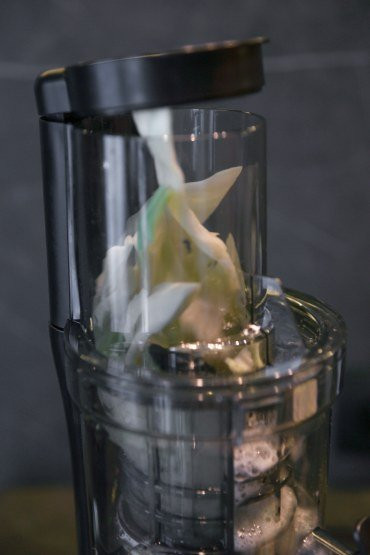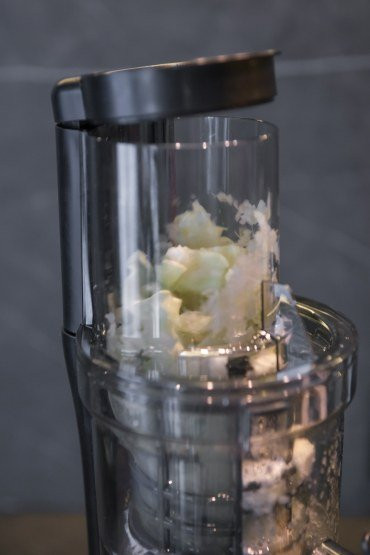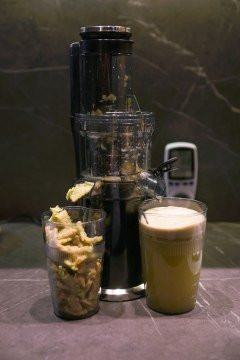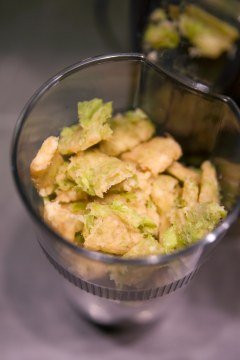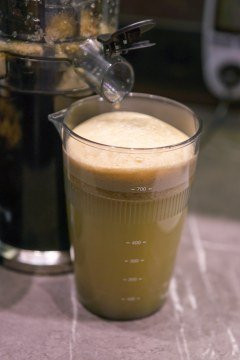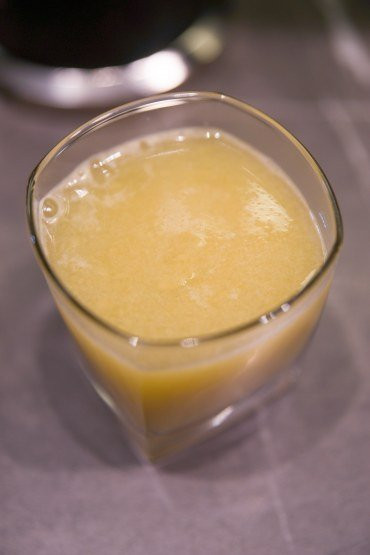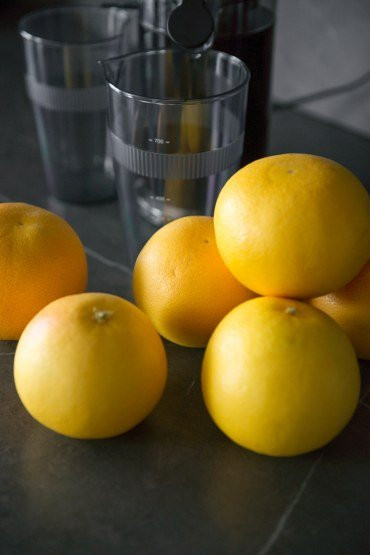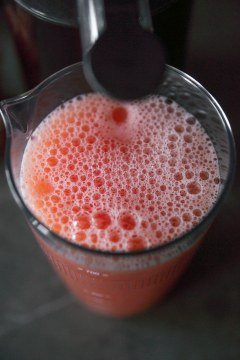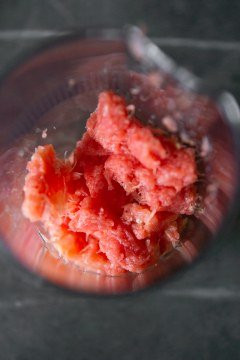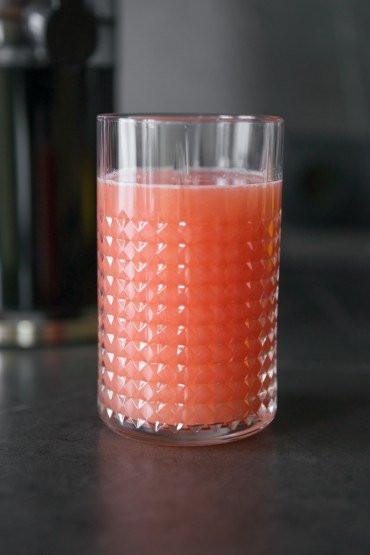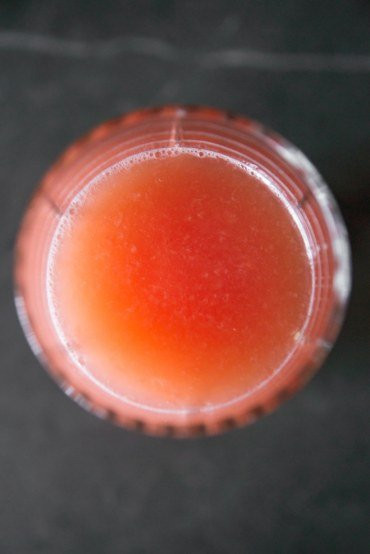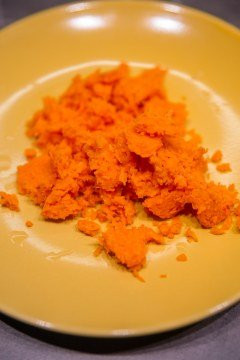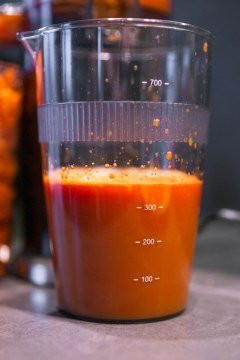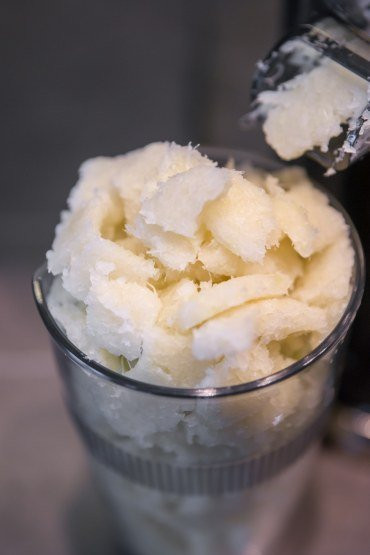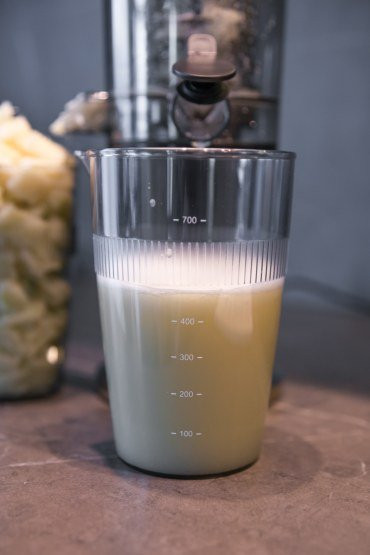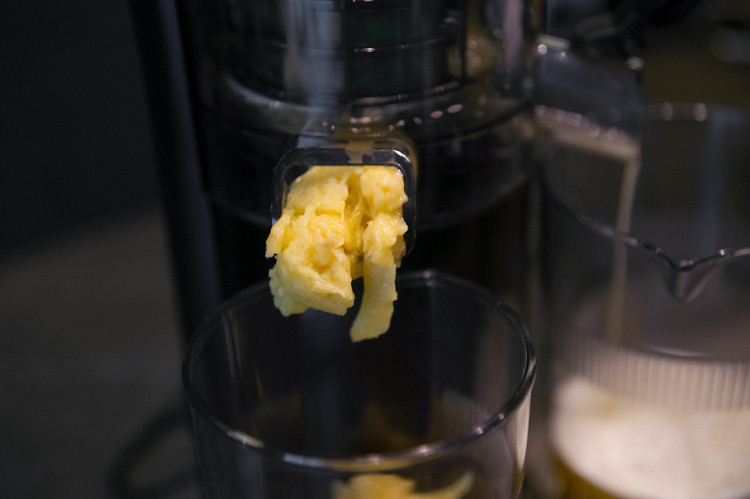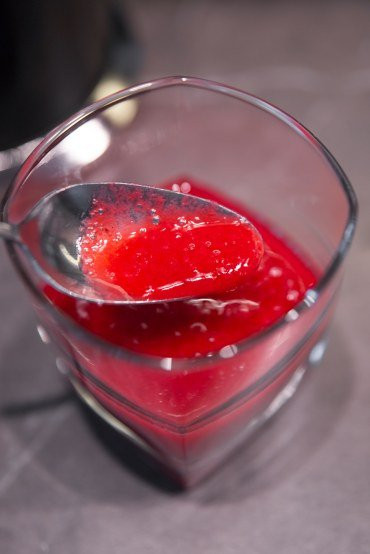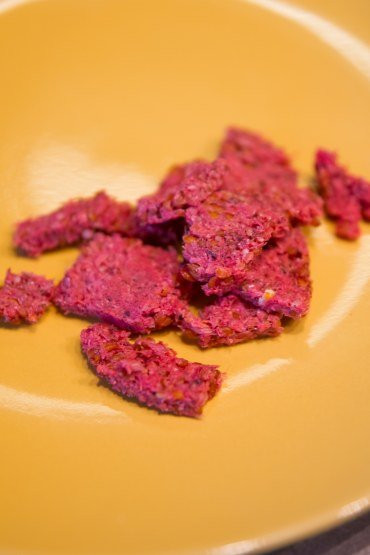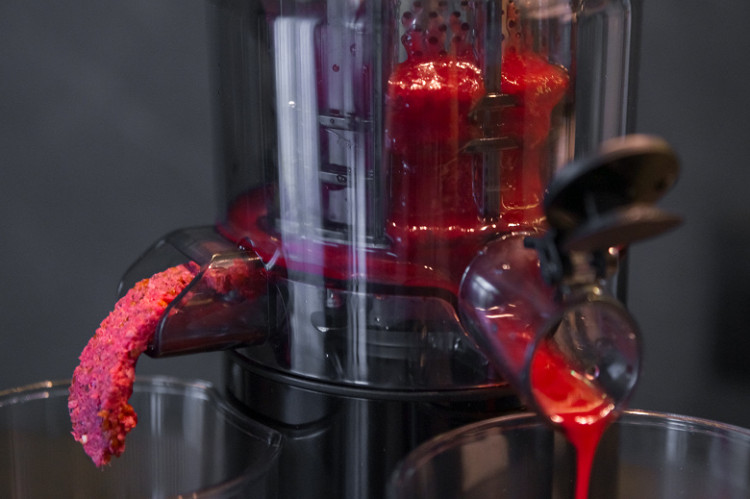Today we will look at the Atvel PowerTwist J7 vertical auger juicer. This is a compact device with one speed, reverse function, leakage protection and a cold press system that preserves maximum vitamins in the juice.
During operation, we will conduct a series of traditional practical tests, find out the true speed and efficiency of the device and share the results of its operation.
Characteristics
| Manufacturer | Atvel |
|---|---|
| Model | PowerTwist J7 |
| Type | vertical auger juicer |
| Country of Origin | China |
| Guarantee | 12 months with the option of an additional 1 year warranty |
| engine's type | DPT (DC motor) |
| Declared power | 180 W |
| Case color | black |
| Main nozzle material | plastic |
| Screw material | plastic, metal |
| Filter material | stainless steel, plastic |
| Control | mechanical |
| Auger speed | 95 rpm |
| Operating modes | 3 (off / on / reverse) |
| Overload protection | There is |
| Auto power off | There is |
| Maximum continuous operating time | 10 minutes |
| Noise level | ≤ 60 dB |
| Peculiarities | smooth engine start |
| Loading neck diameter | 79 mm |
| Juice/press container volume | 0.7/0.65 l |
| Cleaning brush | There is |
| Weight | 3.8 kg |
| Dimensions (W×H×D) | 175×415×140 mm |
| Network cable length | 1m |
Equipment
The Atvel PowerTwist J7 juicer was delivered to us in a compact package made of durable glossy cardboard. On the sides of the box, made in the brand’s corporate style, there are: the company logo, the full name of the model, images of the device in four color options, as well as brief technical specifications and schematic drawings of the juicer’s components.
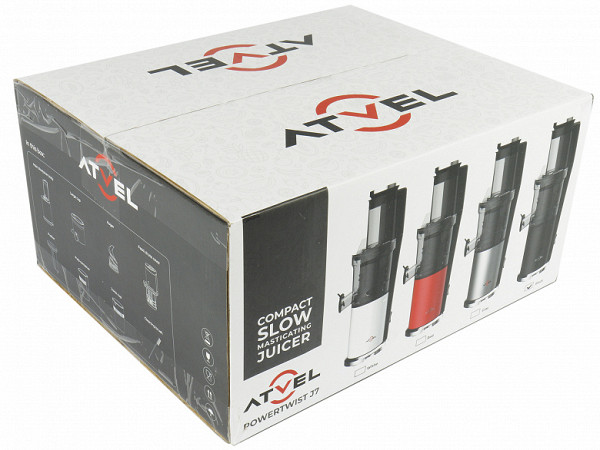
All text on the packaging is written in English, with a Russian-language sticker containing brief information about the device and the manufacturer, pasted on one of the sides.
Inside the box, the juicer, its components and accessories are packed in separate plastic bags and securely secured with inserts made of durable pressed cardboard. The packaging does not have a carrying handle.
The Atvel PowerTwist J7 kit includes:
- Main unit with motor
- Tank for separation of juice and pulp
- Module with loading opening
- Auger
- Pusher
- Bowls for pulp and juice
- Filter cleaning brush
- User manual and recipe book
At first sight
The body of the compact and very nice-looking juicer is made of plastic. Today, Atvel PowerTwist J7 is produced in four colors: white, red, gray and black. We got a strict, laconic fourth option.
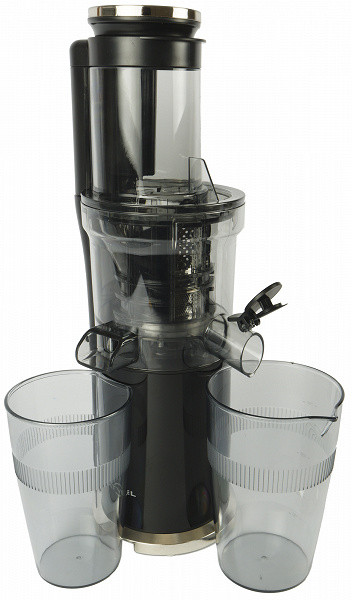
The glossy finish of the heavy main body is complemented by silver plastic with a moderate shine. A small company logo is painted on the bottom on both sides.
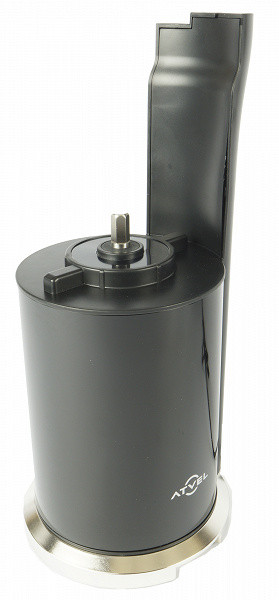
Attached to the side of the cylindrical body is a matte black plastic strip, at the bottom of which there is a switch button — the only control element.

A reservoir is installed on the motor block, where the juice and pulp are separated during squeezing. The hole for waste exiting the bowl is closed with a rubber valve. To the right of the tank, juice pours out of a cylindrical spout. The juice outlet channel is equipped with an anti-drip lid with a silicone gasket.

A massive, rather heavy plastic screw is inserted inside a special recess. The hole for installing the screw is sealed with a removable silicone insert.
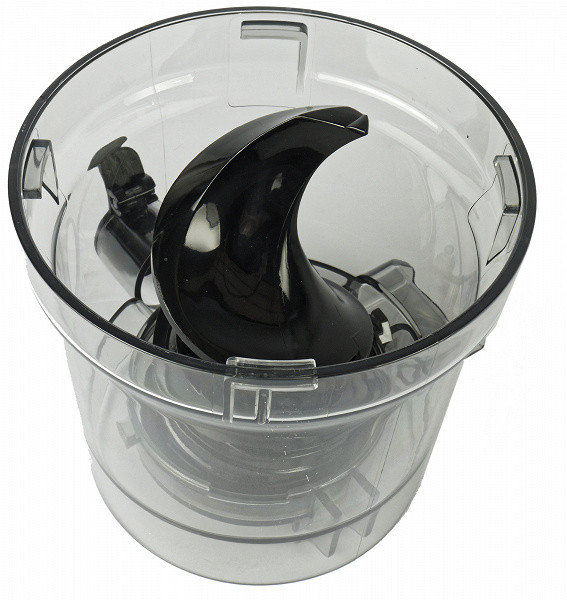
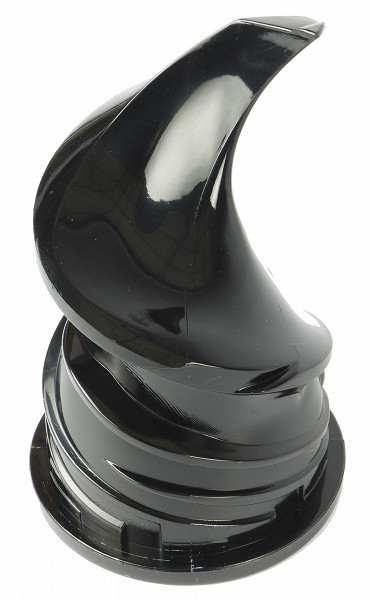
The next design element is the juicer module.

The auger is inserted into the tank almost half its height. Thanks to special protrusions around the perimeter, it fits snugly into the tank and is securely secured with a latch. Metal filter plates with holes of two different sizes are built into the bottom of the module.

On the left side of the upper part of the module there is a matte plastic strip, which, when connected to a similar strip on the body, provides additional fixation of the element and the entire structure as a whole. On the black surface there are drawings to indicate the direction of blocking.
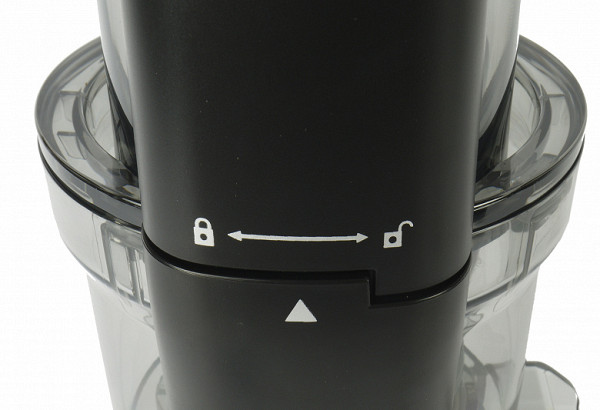
The top part of the module is a loading hole with a lid. The diameter of the hole in the neck itself is 7.9 cm. The neck is closed with a lid with a hole that is already significantly smaller in size — 4.3 cm.

The hole is not perfectly round; It has a 0.5mm diameter tongue, which slightly reduces the actual size of the loading opening in the lid, especially in the case of hard fruits such as carrots or apples.
The pusher is made of plastic. Its length is sufficient to push stubborn products, but so that the rotating auger does not come into contact with the pusher itself during operation.

The height of the entire structure is 41.5 cm, the diameter of the base is 13 cm. The weight of the device is 2.2 kg.

From the bottom of the device we see four legs with rubber inserts, a nameplate with technical information and ventilation holes. A power cord 85 cm long comes out of the back.

Containers for juice and pulp are made of the same darkened plastic as the tank with the module. In the finger grip area, both containers are equipped with an anti-slip ribbed strip.
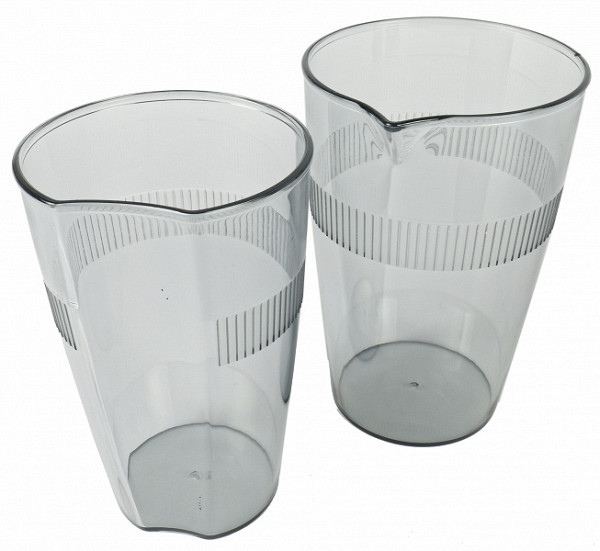
The volume of the juice bowl at the top edge is 700 ml. There are no marks on the pulp container, but according to information from the documentation, it can hold up to 650 ml. However, in practice the 650ml capacity is the maximum and the bowl fills almost to the brim, meaning the actual working volume is slightly less. The bowl has one concave side, which allows it to fit tightly to the body. The pulp container fits easily into the juice bowl, which saves storage space.
The kit includes a convenient brush with medium-hard bristles for cleaning the filter.

All components of the Atvel PowerTwist J7 look high quality. All parts of the juicer fit tightly together, no visual defects were found.
Instructions
The instruction manual is presented in the form of a 17-page A5 brochure, printed on thick glossy paper with good printing quality.

A description of the juicer device, its operating principles, tips for safe operation and care of the device are presented in a logically structured text. The information is written in simple and understandable language, and the main points are supported by schematic drawings for better understanding. The last two pages of the instructions are reserved for the warranty card.
In addition to the instructions, the device comes with a book of recipes for freshly squeezed juices. This colorful brochure contains many recipes with detailed descriptions of the composition and preparation process of each drink.
Control
Atvel PowerTwist J7 is controlled using one single button located on the side of the motor unit. The button has three positions: On, Off and R — reverse.
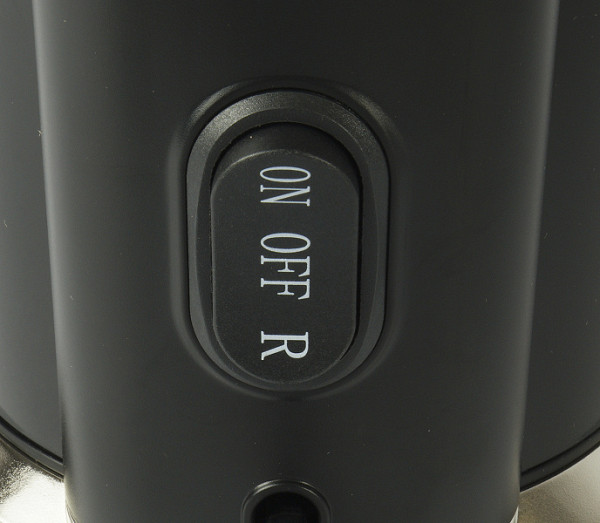
The device operates at one speed. To turn on the device, you must press the top of the button; pressing it back turns it off. If the button is pressed down and held in this position, the reverse operating mode will turn on. It is important to remember that the device will not start working if the filler cap is not closed. If the lid opens more than 2 cm during operation, the rotation of the auger will automatically stop. To resume operation, simply close the lid.
Exploitation
The instructions do not contain any special recommendations for preparing the juicer for the first time, so we did the standard thing: we cleaned and dried all parts of the device, then wiped the main unit. After that, we assembled the device and connected it to the mains. Assembly is intuitive and does not cause any difficulties.

The juice extraction process occurs evenly and without problems, regardless of the type of product, while the average operating speed is maintained. The juicer operates with a moderate noise level and does not move or vibrate in place. If too many hard fruits are loaded into the neck at the same time, they can lift the lid, especially when the auger is moving vigorously. Sometimes the lid may lift on its own due to stress in the structure. The photographs below show these moments as the auger rotates.
If the lid rises more than a few centimeters, the auger automatically stops. In this case, it is enough to simply press the lid to the neck, and the work will continue. Sometimes a few drops of juice may escape from the neck, but this happens rarely and in small volumes.
The Atvel PowerTwist J7 juicer passed our tests successfully and without problems, demonstrating its efficiency and reliability. We always received juice of excellent quality with a minimum amount of foam and almost dry pulp.
The squeeze block of the juicer is transparent, which allows you to observe the process. The hole in the loading neck lid is small, so the fruit needs to be cut into several pieces. If the lid is raised, large pieces of fruit can be placed in the neck, but the lid must be lowered to continue working. This action is simple and does not require much effort.
The manufacturer recommends using the device for no more than 10 minutes at a time, after which it should be allowed to rest for about 30 minutes. During this time, you can process about 3 kg of apples and get about 2 liters of juice.
Care
After use, it is recommended to wash all parts of the juicer, with the exception of the motor unit, with warm water and a mild detergent. You can use a special brush to clean the filter and auger. The motor unit should be wiped with a damp cloth and then dried. Removable parts can be washed in the dishwasher at a temperature not exceeding 60 degrees.
Our measurements
The power consumed by the juicer depends on the hardness of the processed ingredients and varies from 42 to 185 W. The maximum power consumption (185 W) was observed when extracting juice from carrots.
The juicer has a low noise level, except when processing hard vegetables such as carrots, apples and cabbage, when a loud squeaking noise (caused by the friction of the vegetables and not the operation of the device) can be heard. The noise level when squeezing grapefruit juice is approximately 65 dBA, and when processing apples it is up to 73 dBA, according to our measurements.
Practice tests
When testing juicers, we follow a specific methodology, which includes conducting a series of standard tests. We press exactly one kilogram of certain types of raw materials: Granny Smith apples, pink grapefruits, cabbage and carrots. Thus, we calculate the productivity factor, which represents the average volume of juice obtained from one kilogram of product and the average time taken to process the specified weight.
Mandatory Test #1 (Grenny Smith apples)
The apples we used were not the largest in size, so they could easily be put into the mouth of the juicer whole or cut into halves without the core. However, to avoid the auger stopping when lifting the lid and to ensure accurate processing time results, we decided to cut the apples into eight pieces and feed them one at a time through the hole in the lid without interruption.
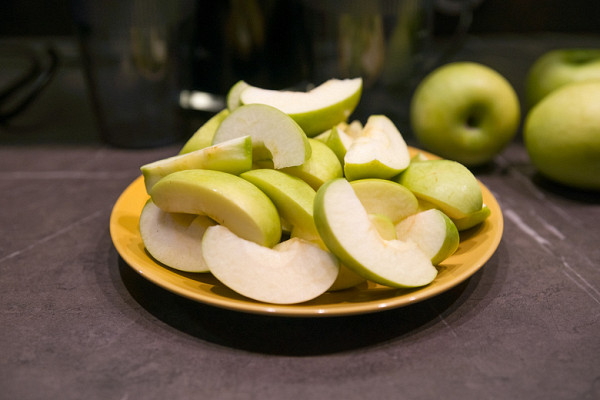
It looks like we were a bit rushed and on a few occasions some apple slices that had accumulated in the mouth of the juicer lifted the lid from the bottom a little, causing it to open slightly. This did not greatly affect the operation process, and the device did not stop.
İtici yalnızca bir kez kullanıldı. Temel olarak, elmalar bizim yardımımız olmadan burgu tarafından çıtırdayarak ezildi. Kekin kuru ve ufalanmış olduğu ortaya çıktı. Çok fazla köpük vardı, meyve suyunda neredeyse hiç posa yoktu.
Result: 3 minutes 15 seconds, 670 grams of juice (no foam)
Mandatory test No. 2 (pink grapefruit)
One kilogram of grapefruit was, if possible, cleared of white films and divided into slices
In this test, as expected, there were no difficulties in processing the fruit. The slices were ground without delay, the pulp neatly fell into the container, and the juice quickly filled the container.
The pulp was moderately moist, we didn’t see any liquid in the container, and the juice itself contained almost no pulp.
Result: 2 minutes 55 seconds, 755 grams of juice (no foam)
Mandatory test No. 3 (carrots)
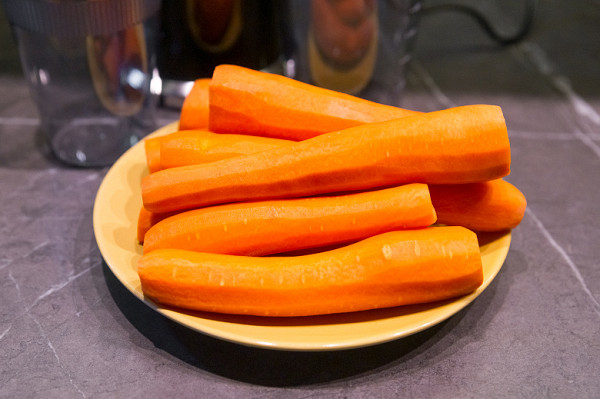
We cut the carrots into 2-3 parts and loaded them one by one, waiting for the first part to completely fall into the auger. The carrot pieces cracked, but the juicer calmly and evenly turned them into thick, dense juice.
The pulp was moderately moist, and you could feel the microscopic pulp in the juice with every sip. Halfway through the process, the waste container had to be emptied.
Result: 4 minutes 55 seconds, 370 grams of juice (no foam)
Mandatory test No. 4 (cabbage)
A kilogram of cabbage was cut into strips, focusing on the size of the loading hole in the lid.
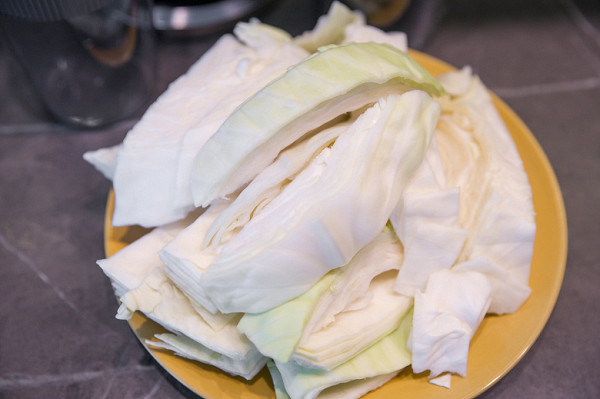
The pusher was used constantly, otherwise cabbage leaves would accumulate in the neck and lift the lid. The pressed cake briquettes were almost dry.
No unprocessed pieces or whole cabbage leaves were found in it.
Result: 6 minutes 07 seconds, 470 grams of juice (no foam)
Summing up the testing results
The average speed and efficiency values from the four mandatory tests for the Atvel PowerTwist J7 juicer were 4 minutes 18 seconds and 566 grams respectively. Compared to competitors in its category (vertical auger juicers), the device performed rather at the lower end of the average in both speed and efficiency.
A pineapple

From 500 g of pineapple in 2 minutes 15 seconds we got 295 g of juice excluding foam.
Wet pulp has accumulated in the waste container.

The juice itself turned out thick, without pulp.

Result: excellent
Red Ribes
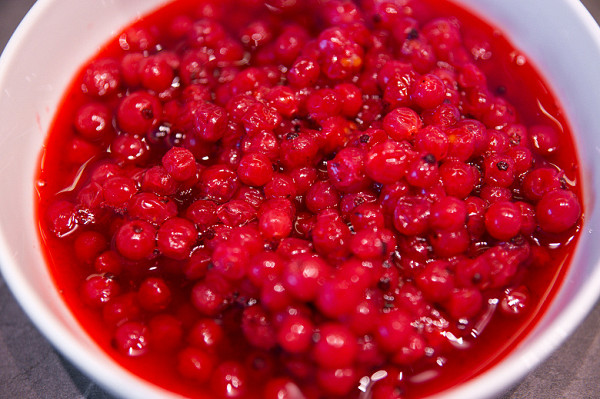
In 1 minute and 26 seconds, exactly 100 g of thick, rich juice was squeezed out of 200 g of defrosted red currants.
The waste container contained completely dry cake briquettes interspersed with seeds.
Result: excellent
conclusions
The Atvel PowerTwist J7 auger juicer is a convenient and pleasant device to use. Assembly and cleaning of the device does not cause any problems. The presence of legs with anti-slip pads ensures stable grip on the table surface and completely reduces vibration. The noise level is moderate, which does not cause discomfort.
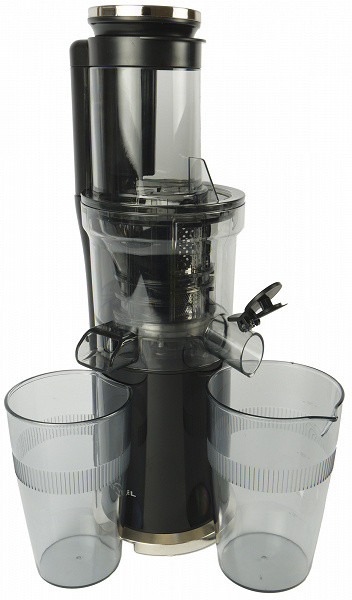
The spin speed is not the highest, but we appreciate the quantity and quality of the resulting drink. The device copes well with products of varying hardness, and we confidently recommend it for daily use at home. Among its advantages, it is also worth noting the impossibility of starting the device if it is not assembled correctly, the absence of pulp particles flying out of the waste container, as well as the anti-drip system implemented through a valve with a silicone lining on the spout to release juice.
Pros:
- neat assembly and nice design
- ease of assembly and maintenance
- efficient spin
- moderate noise
Minuses:
- not detected

